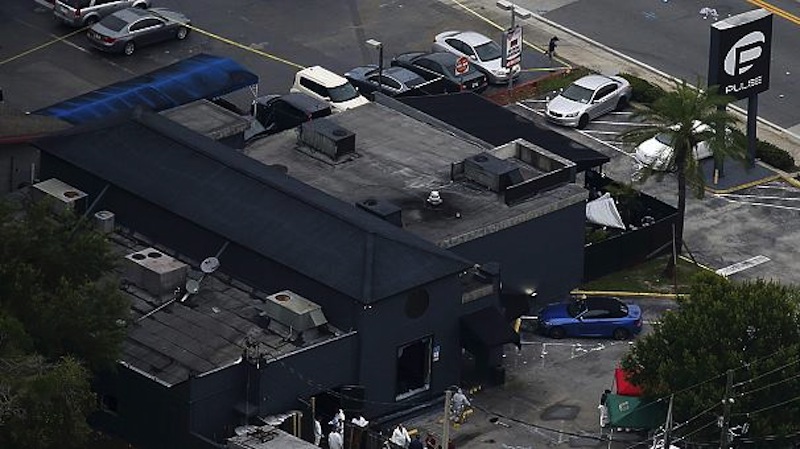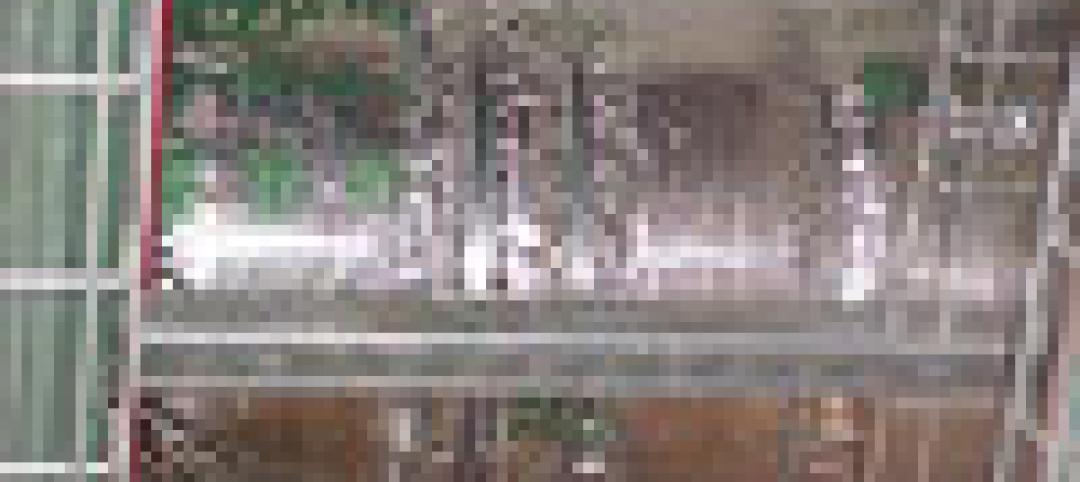The recent mass shooting at an L.G.B.T. nightclub in Orlando, Fla., once again raises emotional questions about gun ownership, the government’s antiterrorism policies, and how to thwart an ideologically motivated, if deranged, individual from wreaking havoc in the future.
In an opinion piece published in the Chicago Tribune on Monday, the newspaper’s architecture critic Blair Kamin notes that terrorist targets are no longer confined to high-profile buildings such as the World Trade Center in New York. They are occurring with greater frequency in places where large numbers of people gather, like the concert hall in Paris where, last November, gunmen killed nearly 90 people.
The Orlando attack killed 49 people in the club Pulse, which Kamin points out would have seemed the most unlikely of targets, even knowing the profile of its Muslim-American assailant, Omar Mateen, who (according to law enforcement sources) may have been gay.
But can “soft targets” like these be made safer? Kamin wonders if a building’s design provides a viable solution.
He notes that One World Trade Center (now better known as the Freedom Tower) and Alfred P. Murrah building in Oklahoma City have been rebuilt with massively thick walls. The Oklahoma building is now three stories, instead than nine like its predecessor.
The 1,792-foot-tall Freedom Tower may not be aesthetically elegant, but it is engineered with fortification, and assuaging its occupants’ anxieties, as a prime objective.
Back in 2003, the Federal Emergency Management Agency published a primer for designing buildings to mitigate terrorist attacks. “Designing security into a building requires a complex series of tradeoffs,” FEMA stated. “Security concerns need to be balanced with many other design constraints such as accessibility, initial and life-cycle costs, natural hazard mitigation, fire protection, energy efficiency, and aesthetics.”
A dozen years later, the world is now a more dangerous place, and terrorism is more random and unpredictable. Kamin acknowledges that, in their desire to feel safer, people will sacrifice a certain amount of freedom and convenience, such as metal detectors and patdowns at airports and ballparks.
But FEMA’s advisory isn’t entirely irrelevant, either. Kamin rejects the presumption that every single venue where people congregate—a restaurant, a shopping center, etc.—needs to be made into a fortress.
His column further asserts that it is both unrealistic and impractical to ask designers and building owners to install protective measures that would limit freedom of movement and assembly beyond what most Americans are willing to tolerate.
Such measures “seek solutions in the wrong place,” he says. “And grant a victory to the terrorists.”
Related Stories
| Dec 10, 2011
10 Great Solutions
The editors of Building Design+Construction present 10 “Great Solutions” that highlight innovative technology and products that can be used to address some of the many problems Building Teams face in their day-to-day work. Readers are encouraged to submit entries for Great Solutions; if we use yours, you’ll receive a $25 gift certificate. Look for more Great Solutions in 2012 at: www.bdcnetwork.com/greatsolutions/2012.
| Oct 17, 2011
Clery Act report reveals community colleges lacking integrated mass notification systems
“Detailed Analysis of U.S. College and University Annual Clery Act Reports” study now available.
| Sep 14, 2011
Research shows large gap in safety focus
82% of public, private and 2-year specialized colleges and universities believe they are not very effective at managing safe and secure openings or identities.
| Sep 12, 2011
Morgan Thermal Ceramics’ system for installing grease duct enclosures achieves UL listing
Updated installation results in 33% space savings.
| May 25, 2011
TOTO tests universal design at the AIA conference
If you could be 80 years old for 30 minutes—and have to readjust everything you think you know about your own mobility—would you do it?
| May 4, 2011
SAFTI FIRST to debut free apps for iPhone, iPod Touch, and iPad at AIA Convention
SAFTI FIRST, manufacturer of fire rated glass and framing solutions, will debut its mySAFTI app, the first interactive design tool that takes the guesswork out of choosing the correct fire rated glass product, at the AIA National Convention in New Orleans, May 12-14. Visit booth1634.
| Feb 11, 2011
Four Products That Stand Up to Hurricanes
What do a panelized wall system, a newly developed roof hatch, spray polyurethane foam, and a custom-made curtain wall have in common? They’ve been extensively researched and tested for their ability to take abuse from the likes of Hurricane Katrina.
| Oct 12, 2010
Cell and Genome Sciences Building, Farmington, Conn.
27th Annual Reconstruction Awards—Silver Award. Administrators at the University of Connecticut Health Center in Farmington didn’t think much of the 1970s building they planned to turn into the school’s Cell and Genome Sciences Building. It’s not that the former toxicology research facility was in such terrible shape, but the 117,800-sf structure had almost no windows and its interior was dark and chopped up.















